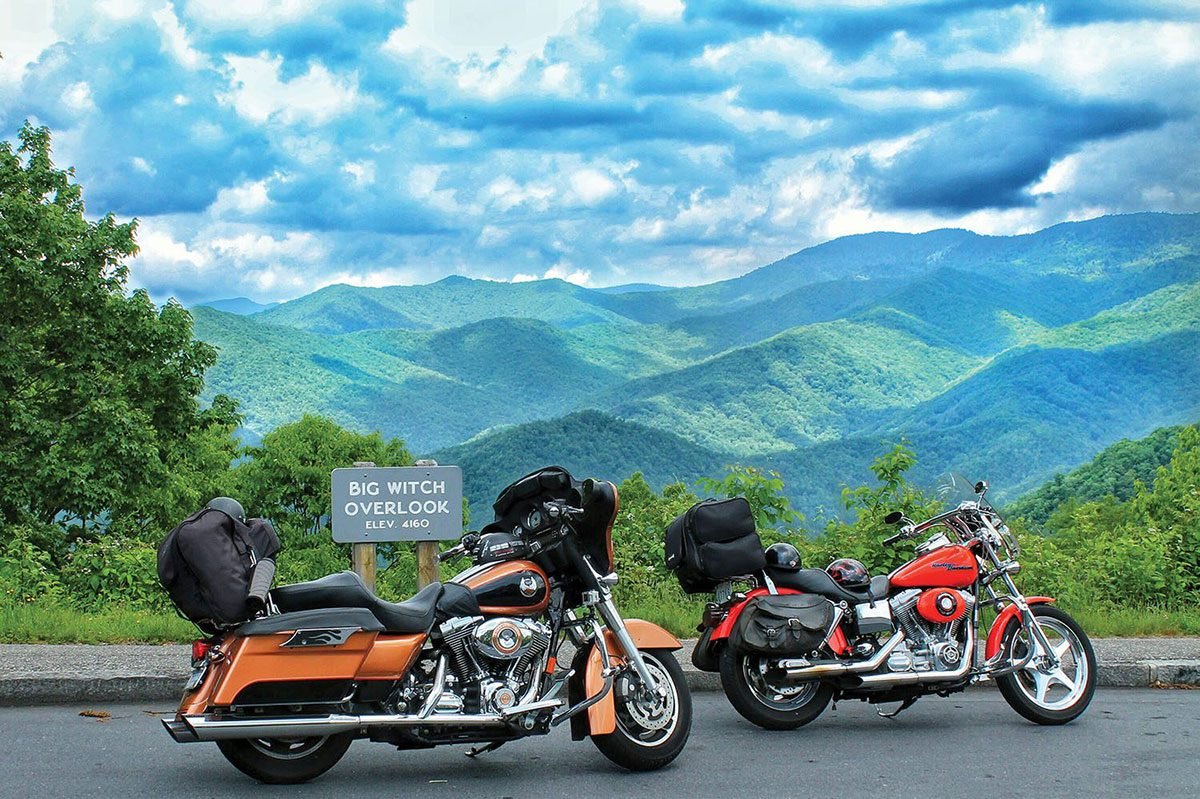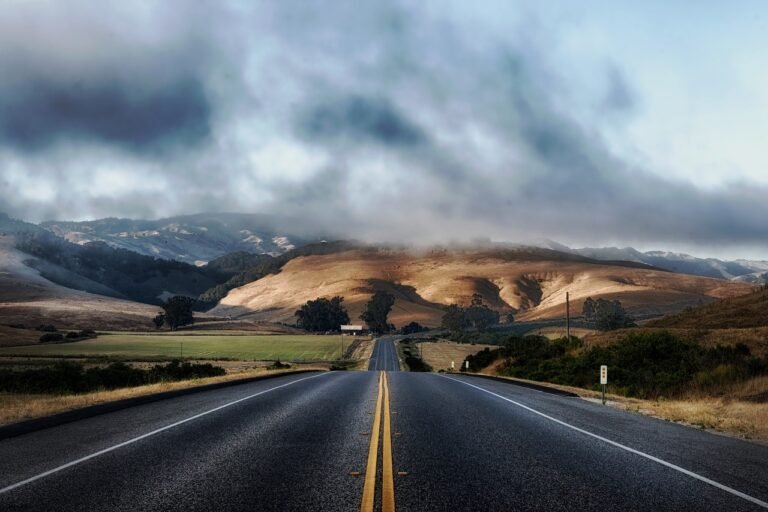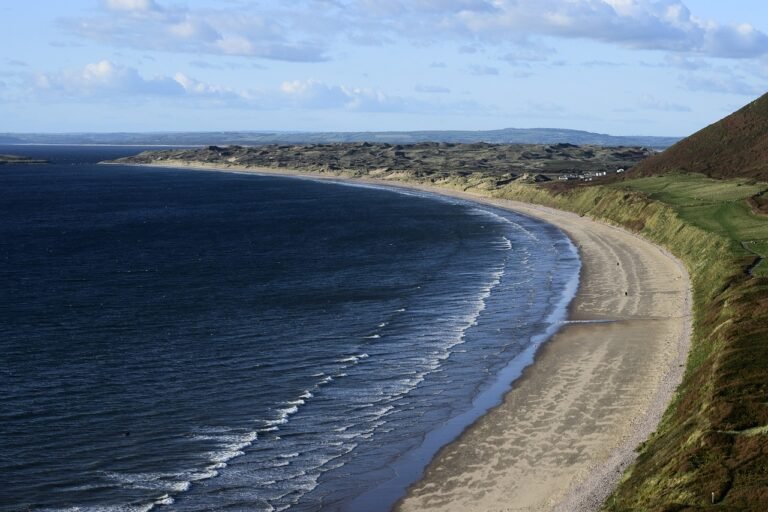3-Day Itinerary for Exploring Road Trips on the Blue Ridge Parkway (2025)

The Blue Ridge Parkway weaves like a ribbon through the ancient Appalachian Mountains, offering travelers one of America’s most breathtaking journeys. Planning Blue Ridge Parkway Itinerary in a manner that one can complete it in 3 days was initially a big challenge for me. As morning sun rises across valleys and sunlight filters through canopies of diverse hardwoods, you’ll understand why this 469-mile scenic route has earned its reputation as “America’s Favorite Drive.” Connecting Shenandoah National Park in Virginia to Great Smoky Mountains National Park in North Carolina, this engineering marvel isn’t just a road—it’s a destination in itself.
The year 2025 presents an ideal opportunity to experience this national treasure. With enhanced visitor facilities, fewer pandemic-related restrictions, and special centennial celebrations at nearby attractions, there’s never been a better time to plan your Blue Ridge adventure. This carefully crafted 3-day itinerary covers the most spectacular sections of the Parkway while allowing ample time to immerse yourself in the natural beauty, cultural heritage, and outdoor activities that make this region so special.
Planning Your Blue Ridge Parkway Adventure
Table of Contents
ToggleBest Time to Visit
The Blue Ridge Parkway offers distinct experiences across all four seasons, each with its own charm:
- Spring (April-May): Witness the mountains come alive with wildflower blooms and vibrant greenery. According to the National Park Service, over 1,600 plant species can be found along the Parkway, many of which burst into color during spring.
- Summer (June-August): Enjoy comfortable temperatures at higher elevations (often 10-15°F cooler than surrounding lowlands), making this a perfect escape from summer heat. Summer also brings the fullest operating schedule for facilities and attractions.
- Fall (September-October): Experience the world-famous fall foliage as the mountains transform into a tapestry of red, orange, and gold. Peak colors typically roll from north to south and higher to lower elevations throughout October.
- Winter (November-March): Discover serene, crowd-free vistas and dramatic snow-covered landscapes. Be aware that weather conditions frequently cause partial closures, particularly at higher elevations.
For this itinerary, we recommend late spring through early fall when all facilities are operating and road conditions are most reliable. The Blue Ridge Parkway Association provides real-time updates on road conditions and closures throughout the year.
Getting There
The Parkway’s length offers multiple access points, but the two main gateway cities are:
- Roanoke, Virginia: Accessible via Roanoke-Blacksburg Regional Airport (ROA) with connections to major East Coast hubs
- Asheville, North Carolina: Served by Asheville Regional Airport (AVL) with expanded flight options for 2025
From major East Coast cities, driving times to access points vary:
- Washington D.C. to Front Royal (northern entrance): 1.5 hours
- Richmond to Waynesboro: 1.5 hours
- Charlotte to Asheville: 2 hours
- Atlanta to the southern terminus: 3 hours
Essential Preparation Tips
Before embarking on your Parkway journey, consider these crucial preparations:
- Vehicle Considerations: The Parkway’s winding nature makes a reliable, comfortable vehicle essential. While RVs and motorcycles are welcome, be prepared for curves and occasional steep grades. Electric vehicle owners should note that charging stations are being added throughout 2024-2025, but remain limited primarily to gateway communities.
- Fuel Planning: Gas stations are not available on the Parkway itself. Fill up before entering and whenever you exit to nearby towns. Download the Blue Ridge Parkway Travel Planner app, which maps nearby service stations.
- Connectivity: Prepare for significant cell service dead zones along much of the route. Download offline maps, make accommodation reservations in advance, and inform loved ones of your itinerary.
- Accommodations: For 2025, book at least 3-6 months ahead, especially for peak fall season. On-Parkway lodging is limited and fills quickly.
- Essential Gear: Pack layers (even in summer), sturdy hiking shoes, rain gear, sunscreen, insect repellent, and a good camera. Binoculars enhance wildlife viewing opportunities.
Day 1: The Virginia Highlands (Milepost 0-120)
Morning: Shenandoah to Peaks of Otter
Begin your journey at Rockfish Gap (Milepost 0), where the Parkway connects with Skyline Drive and Shenandoah National Park. As you start driving south, you’ll immediately notice the Parkway’s intentional design—a leisurely 45 mph speed limit, limited commercial development, and frequent pull-offs that frame perfect vistas.
Your first stop should be Humpback Rocks (MP 5.8), where a reconstructed mountain farm museum offers a glimpse into 19th-century Appalachian life. The moderate 1-mile hike to Humpback Rocks rewards early birds with panoramic views of the Shenandoah Valley and Piedmont. Plan to arrive before 10am to avoid crowds and capture the best morning light for photographs.
For breakfast, either pack a picnic to enjoy at the mountain farm picnic area or detour briefly into nearby Waynesboro for a hearty meal at The Green Leaf Grill, which opens at 7am and specializes in local ingredients.
Continue south to the James River Visitor Center (MP 63), where the Parkway crosses the mighty James at its lowest elevation (650 feet). The restored 1848 canal lock and short trail to the James River Foot Bridge provide excellent historical context and photography opportunities.
Afternoon: Peaks of Otter to Roanoke
By midday, you’ll reach the Peaks of Otter area (MP 86), one of the Parkway’s crown jewels. The historic Peaks of Otter Lodge restaurant offers lunch with stunning views of Abbott Lake and Sharp Top Mountain. According to Virginia Tourism, this area has drawn visitors seeking natural beauty and spiritual renewal since the 1800s.
After lunch, choose between two outstanding activities:
- Tackle the challenging but rewarding Sharp Top Trail (1.5 miles each way), which climbs to a 3,875-foot summit offering 360-degree views. Thomas Jefferson once believed this was Virginia’s highest peak.
- Take the gentler Abbott Lake Loop (1 mile), perfect for wildlife spotting and reflection. The flat, accessible trail circles the lake with constant mountain views.
Before continuing south, make a brief stop at Fallingwater Cascades (MP 83) for a refreshing 1.4-mile round-trip hike to a beautiful, multi-tiered waterfall.
As afternoon transitions to evening, explore the Roanoke Mountain Loop Road (MP 120), a 4-mile side trip that climbs to exceptional viewpoints overlooking the Roanoke Valley. This is also where you’ll find access to the famous Mill Mountain Star, the world’s largest freestanding illuminated star.
Evening: Roanoke Area
Descend into Roanoke for your first night’s accommodation. The Hotel Roanoke, a historic property dating to 1882, offers Tudor-style elegance and walkable access to downtown attractions. For more budget-friendly options, the King George Inn provides comfortable rooms in a convenient location.
Roanoke’s revitalized downtown offers excellent dining options. Try River and Rail for sophisticated Southern cuisine featuring locally sourced ingredients, or Lucky Restaurant for innovative farm-to-table dishes and local craft beers.
After dinner, stroll along the illuminated Roanoke River Greenway or visit the Taubman Museum of Art, which stays open until 8pm on Thursdays and features an excellent collection of American art with regional focus.
Day 2: The Highland Plateau (Milepost 120-305)
Morning: Roanoke to Mabry Mill
Begin your second day with breakfast at Scratch Biscuit Company in Roanoke’s Grandin Village, where homemade biscuits with creative toppings fuel your day’s adventures.
Rejoin the Parkway and continue south through rolling highlands to Rocky Knob Recreation Area (MP 167). The Rock Castle Gorge Overlook provides breathtaking views of this 3,500-acre preserve where pioneer families once farmed. For hikers seeking a challenge, the 10.8-mile Rock Castle Gorge Trail is considered one of the Parkway’s finest, though it requires significant time and preparation.
By mid-morning, you’ll reach the Parkway’s most photographed location: Mabry Mill (MP 176). This picturesque gristmill, completed in 1910 by entrepreneurial mountain craftsman Ed Mabry, represents the ingenuity and self-sufficiency of Appalachian culture. On summer and fall weekends, the site comes alive with demonstrations of traditional crafts like blacksmithing, basket weaving, and wood carving.
For lunch, the adjacent Mabry Mill Restaurant serves authentic regional specialties including their famous buckwheat pancakes with local maple syrup. Don’t miss the chance to purchase stone-ground grits or cornmeal processed at the mill—a delicious, authentic souvenir.
Afternoon: Blue Ridge Music Center to Blowing Rock
As you continue south, the landscape transitions to the high plateau region of the Blue Ridge. Your next significant stop is the Blue Ridge Music Center (MP 213), which celebrates the region’s rich musical heritage. According to the Blue Ridge Music Center website, this area is the birthplace of the traditional string music that evolved into bluegrass and country music. The center’s updated 2025 performance schedule features free midday mountain music from May through October, where local musicians perform on the breezeway stage.
Take time to explore the excellent “Roots of American Music” exhibit, which traces the evolution of mountain music through interactive displays and rare instruments. You might even find yourself joining an impromptu jam session—visitors are encouraged to bring instruments.
Continue to Cumberland Knob (MP 217.5), the historic site where construction of the Blue Ridge Parkway began in 1935. A short 1-mile loop trail leads through rhododendron thickets to a peaceful woodland setting.
Your journey next takes you to Doughton Park (MP 238-245), one of the Parkway’s largest recreation areas. Stop at the Brinegar Cabin, where Martin Brinegar and his family lived a self-sufficient mountain lifestyle in the late 19th century. The surrounding meadows, locally known as “balds,” offer habitat for diverse wildlife and sweeping mountain views.
Before reaching your evening destination, explore Moses H. Cone Memorial Park (MP 294), a 3,500-acre country estate built by a textile entrepreneur in the early 1900s. The park features 25 miles of carriage trails, perfect for a late afternoon stroll. The Craftsman-style Cone Manor houses the Parkway Craft Center, where Southern Highland Guild artisans display and sell handcrafted items including pottery, jewelry, and woodworking.
Evening: Blowing Rock/Boone Area
For your second night, the charming mountain town of Blowing Rock offers several excellent accommodation options. The historic Green Park Inn, operating since 1891, has hosted luminaries from Annie Oakley to Calvin Coolidge. For a more intimate experience, The New Public House combines beautiful rooms with one of the area’s best restaurants.
Dinner at The Best Cellar features upscale mountain cuisine in a cozy atmosphere, while Bistro Roca offers wood-fired specialties and an excellent craft cocktail menu. Both restaurants emphasize Appalachian ingredients with contemporary preparation.
After dinner, check the schedule at the Appalachian Theatre in nearby Boone for live music, film, or theatrical performances. Alternatively, enjoy a sunset viewing at The Blowing Rock, the town’s namesake geological formation which offers spectacular views of Grandfather Mountain and the Johns River Gorge.


Day 3: The High Country to Asheville (Milepost 305-385)
Morning: Linn Cove Viaduct to Linville Falls
Your final day begins with one of the Parkway’s engineering marvels: the Linn Cove Viaduct (MP 304). This 1,243-foot segmental concrete bridge hugs the face of Grandfather Mountain, representing the final section of the Parkway to be completed in 1987. The visitor center offers exhibits on its innovative construction, which minimized environmental impact on the fragile slope. A short trail leads under and around the viaduct, providing unique perspectives for photography.
Just beyond the viaduct is the entrance to Grandfather Mountain State Park and the adjacent private attraction featuring the famous Mile High Swinging Bridge. Though technically just off the Parkway, this International Biosphere Reserve showcases remarkable biological diversity. According to Grandfather Mountain, the wildlife habitats area allows viewing of native species including black bears, river otters, and bald eagles in naturalistic settings.
By mid-morning, continue to Linville Falls (MP 316), where the Linville River cascades dramatically into the 12-mile Linville Gorge, nicknamed the “Grand Canyon of the East.” Two trail options provide different experiences:
- The moderate Erwins View Trail (1.6 miles round trip) leads to four overlooks with increasingly spectacular views of the upper and lower falls.
- The more strenuous Linville Gorge Trail (1.4 miles round trip) descends to the basin of the falls, offering a powerful perspective from below.
The falls are particularly beautiful in 2025, as recent conservation efforts by the Blue Ridge Conservancy have improved water quality throughout the watershed.
Afternoon: Crabtree Falls to Craggy Gardens
Stop for lunch at the Crabtree Falls Restaurant (MP 339), which serves classic Southern fare with modern touches. Their fried chicken and freshly-made biscuits receive consistently high marks from travelers.
After lunch, take the moderate 2.5-mile loop trail to Crabtree Falls, a 70-foot cascade that plunges over a rock cliff into a boulder-strewn pool. The trail descends through a mixed hardwood forest rich with spring wildflowers or fall color, depending on your visit timing.
Continue to Mount Mitchell State Park (MP 355), where you can stand atop the highest peak east of the Mississippi River at 6,684 feet. A paved, accessible path leads from the parking area to the observation platform offering panoramic views across the Black Mountain range. The small museum details the area’s unique ecology and the conservation story that made this North Carolina’s first state park in 1915.
As you continue toward Asheville, don’t miss Craggy Gardens (MP 364-367), nicknamed the “rhododendron gardens” for their spectacular purple blooms in June. The relatively easy Craggy Pinnacle Trail (0.7 miles round trip) rewards hikers with 360-degree views from a 5,892-foot summit. Even outside blooming season, the twisted, wind-sculpted trees and expansive vistas make this a memorable stop.
Evening: Asheville Area
Complete your Parkway journey with a visit to the Folk Art Center (MP 382), home to the Southern Highland Craft Guild. This premier craft facility showcases the finest traditional and contemporary crafts of the Southern Appalachians. Daily craft demonstrations and a world-class collection of folk art provide context for the region’s rich artistic heritage.
Descend into Asheville for your final evening, where accommodation options abound. For historic luxury, the Omni Grove Park Inn has hosted guests including F. Scott Fitzgerald and ten U.S. presidents. For boutique charm, The Windsor offers elegant suites in downtown Asheville within walking distance of restaurants and galleries.
Asheville’s renowned culinary scene provides numerous dining options. Cúrate offers award-winning Spanish tapas, while Chai Pani serves James Beard Award-winning Indian street food. For farm-to-table dining with mountain views, Sunset Terrace at the Grove Park Inn is unmatched.
After dinner, explore Asheville’s vibrant downtown, where street performers entertain on pleasant evenings and the Asheville Art Museum stays open until 9pm on Thursdays.
Other Related Posts
Beyond the 3-Day Itinerary: Extensions and Alternatives
If You Have More Time
This 3-day itinerary covers approximately 385 miles of the Blue Ridge Parkway, leaving the southern portion (MP 385-469) for another adventure. With additional time, consider these worthwhile extensions:
- Great Smoky Mountains National Park: America’s most visited national park connects to the Parkway’s southern terminus, offering additional scenic drives and extensive hiking opportunities. The National Park Service recommends at least two days to experience the park’s highlights.
- Natural Bridge State Park: Just a short detour from the Parkway in Virginia, this 215-foot natural limestone arch was once owned by Thomas Jefferson and surveyed by George Washington.
- New River State Park: Despite its name, the New River is one of the world’s oldest rivers and offers excellent paddling opportunities through scenic rural landscapes.
- Biltmore Estate: America’s largest private home, built by George Vanderbilt in the 1890s, features 250 rooms set on 8,000 acres of gardens and grounds designed by Frederick Law Olmsted.
Seasonal Variations
While this itinerary works year-round (weather permitting), consider these seasonal adjustments:
- Spring: Focus on lower elevations early in the season, where wildflowers bloom first. The Blue Ridge Parkway Wildflower Report tracks blooming progression.
- Summer: Start your days early to avoid afternoon thunderstorms common at higher elevations. Prioritize higher elevation hikes for cooler temperatures.
- Fall: Allow extra time for leaf-peeping traffic, especially on weekends. Use the Fall Color Tracker to optimize your timing.
- Winter: Check the Parkway’s Real-Time Road Closure Map before starting each day, as conditions can change rapidly. Focus on lower elevations and have alternative routes planned.
Practical Information for Your 2025 Visit
Where to Stay Along the Parkway
On-Parkway lodging options for 2025 include:
- Peaks of Otter Lodge (MP 86): Recently renovated rooms with lake views and an excellent restaurant. Reservations available through Delaware North.
- Pisgah Inn (MP 408): Perched at 5,000 feet with spectacular views. For 2025, online reservations open on November 1, 2024, at Pisgah Inn.
- Rocky Knob Cabins (MP 169): Rustic CCC-era cabins available May-October through Recreation.gov.
For camping enthusiasts, the Parkway offers nine developed campgrounds. The most popular sites—Julian Price (MP 297) and Mount Pisgah (MP 408)—now require reservations through Recreation.gov, while others remain first-come, first-served.
Dining Highlights
Beyond the restaurants mentioned in the itinerary, these Parkway dining experiences deserve recognition:
- The Bluffs Restaurant (MP 241): Reopened in 2021 after extensive renovation, this historic restaurant serves Southern classics in a retro setting.
- Woodlands BBQ (Blowing Rock): Located just off the Parkway, their slow-smoked meats and homemade sides represent the best of North Carolina barbecue tradition.
- The Sourwood Inn (near MP 376): Sunday brunch at this secluded mountain inn requires reservations but rewards with exceptional local ingredients and mountain views.
For picnic provisions, the Asheville Farmers Market offers local cheeses, breads, fruits, and preserves, while Mast General Store locations in Valle Crucis and Waynesville provide classic trail snacks and local specialties.
Safety and Conservation
As you enjoy the Parkway, keep these important considerations in mind:
- Wildlife Safety: The Parkway is home to black bears, deer, and other wildlife. Maintain safe distances, properly store food, and never feed animals. Dawn and dusk offer the best wildlife viewing opportunities.
- Leave No Trace: Help preserve the Parkway by packing out trash, staying on designated trails, and leaving natural and cultural features undisturbed.
- Emergency Preparedness: Program the Parkway’s emergency number (828-298-2491) into your phone. Visitor centers are located approximately every 80 miles, with emergency assistance available through park rangers.
- Conservation Support: Consider supporting the Blue Ridge Parkway Foundation, which funds preservation projects, educational programs, and visitor amenities along the Parkway.
Key Takeaways
Before wrapping up our journey along the Blue Ridge Parkway, here are the essential points to remember when planning your 2025 adventure:
- Plan seasonally – Each season offers unique experiences, with fall providing spectacular foliage, spring showcasing wildflowers, summer offering comfortable temperatures, and winter presenting serene (though sometimes limited) access.
- Make reservations early – Particularly for on-Parkway lodging and fall visits, accommodations should be booked 3-6 months in advance.
- Prepare for limited connectivity – Download offline maps, make accommodation reservations beforehand, and don’t rely on constant cell service.
- Pack for variable conditions – Mountain weather can change rapidly; layers, rain gear, and sturdy hiking shoes are essential regardless of season.
- Respect speed limits – The Parkway’s 45 mph maximum speed limit isn’t just for safety—it’s designed to encourage a leisurely pace that allows full appreciation of the landscape.
- Build in buffer time – Allow extra time between destinations for spontaneous stops at overlooks, short hikes, or engaging with local artisans.
- Support conservation efforts – Consider contributing to organizations that maintain and preserve the Parkway for future generations.
Frequently Asked Questions
How long does it take to drive the entire Blue Ridge Parkway?
While you could technically drive the entire 469 miles in a single day, we don’t recommend it. To truly appreciate the Parkway, allow at least 3-4 days for the highlights or 7-10 days to experience it fully, including stops and side excursions.
Is the Blue Ridge Parkway free to access?
Yes! Unlike many national parks, the Blue Ridge Parkway has no entrance fee. Some specific attractions along or near the Parkway (like Grandfather Mountain or The Blowing Rock) do charge admission fees.
When is the best time to see fall colors on the Blue Ridge Parkway?
Fall color typically progresses from higher to lower elevations throughout October. For 2025, peak colors are expected around October 10-20 in the highest elevations (Mount Mitchell area) and October 25-November 5 at lower elevations near Roanoke and Asheville. The Blue Ridge Parkway Fall Color Tracker provides real-time updates.
Are pets allowed on the Blue Ridge Parkway?
Pets are welcome but must be kept on a leash no longer than 6 feet at all times. They’re allowed at overlooks, picnic areas, campgrounds, and most trails, but are prohibited in public buildings and certain sensitive habitat areas.
Can I drive an RV or pull a trailer on the Parkway?
Yes, RVs and trailers are permitted, but consider size limitations for certain tunnels, particularly south of Asheville. The maximum suggested length is 35 feet, and the maximum height is 12 feet 7 inches to safely clear all tunnels.
What should I do if I encounter wildlife on the Parkway?
Maintain a safe distance (at least 50 yards for bears), never feed wild animals, and view them briefly before moving on. Use binoculars or zoom lenses for closer views rather than physically approaching wildlife.
Are there electric vehicle charging stations along the Parkway?
As of 2025, EV charging infrastructure along the Parkway has improved significantly. Charging stations are now available at major visitor centers including James River, Peaks of Otter, Moses Cone Manor, and the Folk Art Center. Additional charging options exist in gateway communities like Waynesboro, Roanoke, Blowing Rock, and Asheville.
Is the Blue Ridge Parkway open year-round?
The Parkway never officially “closes,” but winter weather frequently causes sections to be temporarily closed, particularly at higher elevations. Always check the NPS Real-Time Road Closure Map before traveling during winter months (November-March).
Conclusion
The Blue Ridge Parkway isn’t just a route between destinations—it’s an immersive journey through America’s natural and cultural heritage. This 3-day itinerary offers a balanced introduction to the Parkway’s diverse landscapes, from rolling Piedmont hills to the dramatic peaks of the Black Mountains.
As you travel this historic road, take time to connect with the land and its people. Speak with local artisans, sample regional cuisine, and pause frequently at overlooks to absorb the ever-changing mountain panoramas. The intentionally slow pace of Parkway travel—a deliberate contrast to our hurried modern lives—invites contemplation and renewal.
Whether you’re capturing the perfect photograph, discovering a hidden waterfall, or simply enjoying the rhythmic curves of this masterfully designed road, the Blue Ridge Parkway offers memories that will stay with you long after your journey ends. As Parkway landscape architect Stanley Abbott once said, this isn’t just a road—it’s “a museum of the American countryside.”
What places along the Blue Ridge Parkway have you visited? Share your experiences and favorite spots in the comments below!






